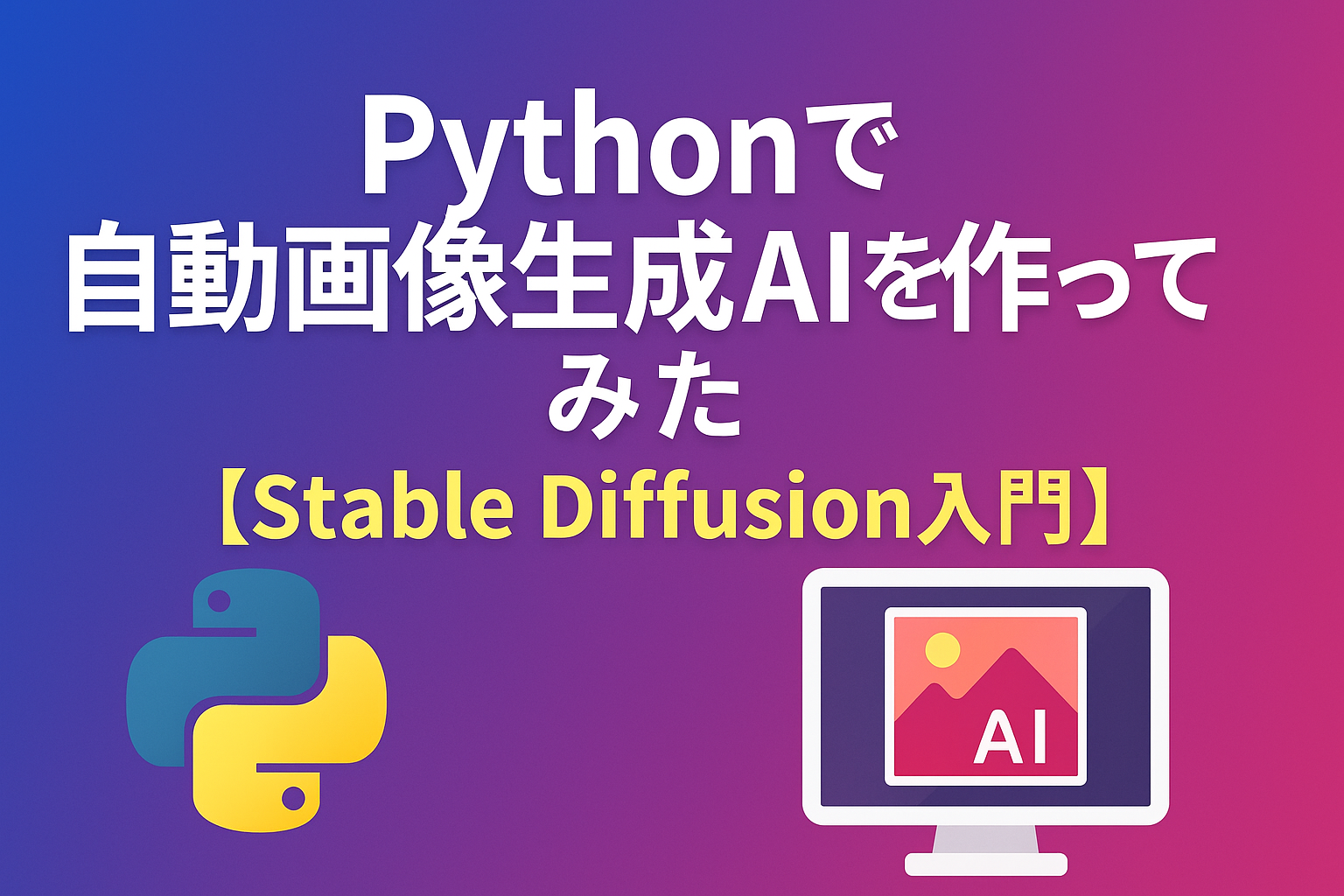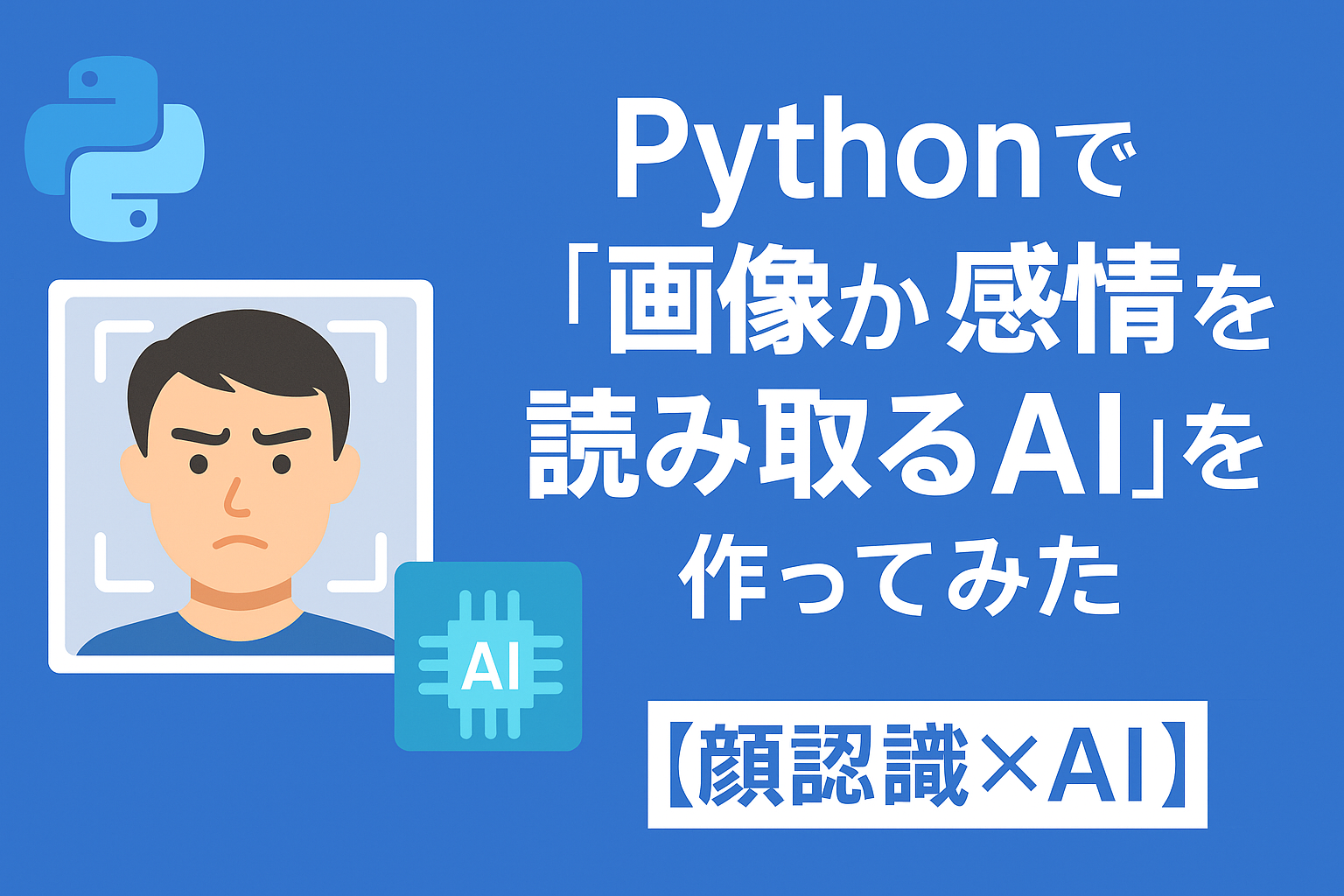"We're in an age where we can create images using AI, but I don't know where to start."
Do you have such concerns?
In this article,How to run Stable Diffusion, the latest image generation AI, in PythonWe will explain this in detail in terms that even beginners can understand.
By using Google Colab, it can be run even on a computer with low specifications.
After reading this article, you will be able to try out Stable Diffusion right away, from the basics to image generation.
Why automate image generation with Python?
conclusion
Python is strong in AI development and can easily handle image generation.
explanation
Why image generation with Python? Here are some reasons:
• Many image generation libraries support Python
• There are many study materials and many answers on question sites.
• You can use Google Colab, so you can try it even if you don't have a GPU.
Stable Diffusion requires libraries like PyTorch and Transformers to work, which are best supported in Python.
In other words, starting with Python is the most cost-effective and beginner-friendly choice.It can be said that.
What is Stable Diffusion?
conclusion
Stable Diffusion is an AI that can generate high-quality images.
explanation
Stable Diffusion is an AI model that can generate images from text.
For example, if you input "Mount Fuji and cherry blossom scenery," a similar image will be output.
Main features include:
• Open source and available to everyone
• Fast and high quality images
• By using a pre-trained model, you can generate code alone.
This technology:Not only image generation, but also illustration creation, advertising, and educational fieldsIt is also used in the following areas:
A report from the Ministry of Internal Affairs and Communications also states that AI-based content generation is expected to become an industry that will grow in the future (Reference:Ministry of Internal Affairs and Communications Information and Communications White Paper).
Required libraries and preparations
conclusion
Using Colab and HuggingFace, no environment setup is required.
explanation
To use Stable Diffusion in Python, you need the following preparations:
• Create a Google Colab account (free)
• Get HuggingFace tokens (free plan available)
• Install the following libraries:
• Diffusers
• Transformers
• accelerate
• Torch
Run the following code in Colab and you're ready to go:
1 | !pip install diffusers transformers accelerate torch |
HuggingFace website (https://huggingface.co) to register as a free member and obtain an Access Token.
Steps to generate images using Python code
conclusion
Create high quality images with just a few lines of code.
explanation
If you paste the following code into Google Colab, an image will be automatically generated.
1 | from diffusers import StableDiffusionPipeline import torch pipe = StableDiffusionPipeline.from_pretrained( "CompVis/stable-diffusion-v1-4", use_auth_token="Your HuggingFace token", torch_dtype=torch.float16 ).to("cuda") prompt = "A fantastical Japanese countryside" image = pipe(prompt).images[0] image.save("output.png") |
This will generate an image and save it as output.png.will be done.
Colab uses free GPUs, so the output takes 10-20 seconds.
How to improve the output image quality?
conclusion
This can be improved by improving the prompt and changing the settings.
explanation
If you want to achieve high quality output images, the following methods are effective.
• Fill in the prompts with details(Example: "Realistic neon lights of Tokyo at night.")
• Change the resolution (but be careful with memory)
• Adjust the value of guidance_scale
Example code:
1 | image = pipe(prompt, guidance_scale=8.5).images[0] |
Increasing this value will result in more accurate image quality for the prompt.
How can it be used?
conclusion
It can be used for a wide range of purposes, including web production, document creation, and education.
explanation
Stable Diffusion can be used in the following ways:
• Eye-catching images for blogs and social media
• Educational materials and picture book-style materials for children
• Illustration production and manga concept assistance
• Image generation as an alternative to free materials
moreover,By training your own model, you can generate images that fit your company or individual worldview.is also possible.
Common errors and solutions
conclusion
Pay attention to the token, GPU settings, and model name.
explanation
Common cases where image generation fails:
• The token is incorrect (check the Access Token)
• It is running on the CPU instead of the GPU (check .to(“cuda”))
• Model name incorrect (correct name is “CompVis/stable-diffusion-v1-4”)
Checking these one by one will usually resolve the error.
summary
By running Stable Diffusion with Python,Anyone can create high quality images.
It's free and easy to get started with Colab and HuggingFace, so please give it a try.
A world where your imagination becomes reality.
Now is the time to experience the power of image generation AI.




